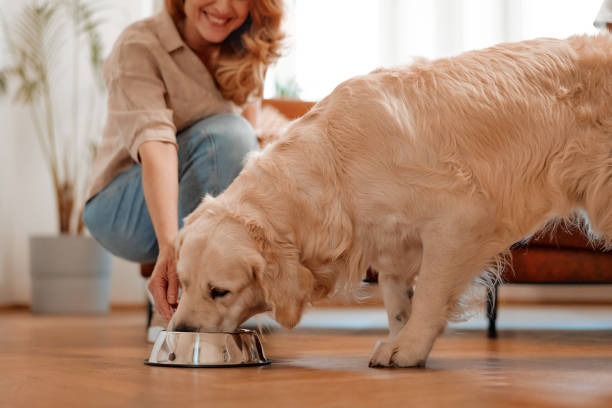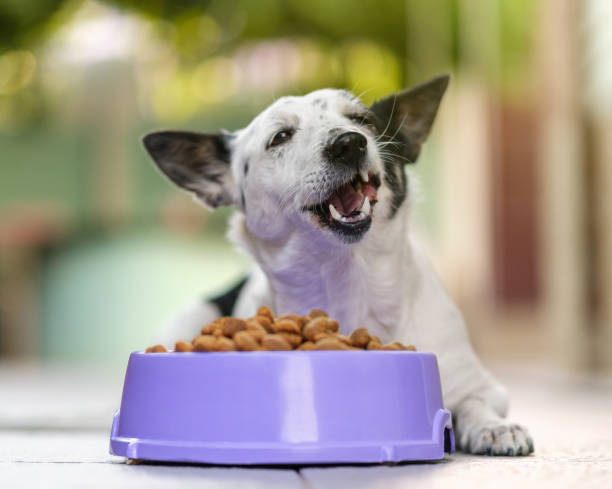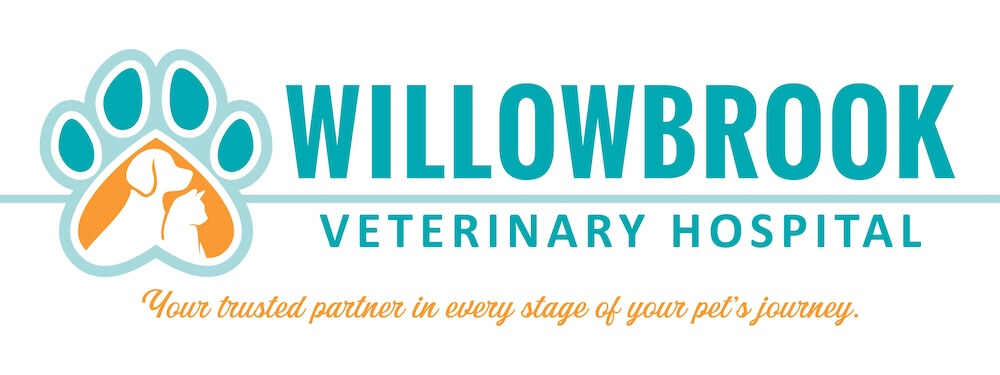How to Read a Pet Food Label: What Vets Want Dog and Cat Owners to Know
Standing in the pet food aisle or scrolling through endless online options can feel overwhelming. Labels with phrases like “grain-free,” “holistic,” or “no by-products” sound appealing, but what do they really mean? And how much is just marketing?
At Willowbrook Veterinary Hospital, we believe pet parents deserve facts, not fear. Here’s a veterinarian-approved guide to understanding pet food labels so you can make confident, informed choices for your dog or cat.
1. Start with the AAFCO Statement
The Association of American Feed Control Officials (AAFCO) is the organization that establishes nutritional standards for pet food in the U.S. While AAFCO itself doesn’t test or regulate pet food, manufacturers must meet its guidelines to claim a diet is “complete and balanced
Always look for this sentence on the bag:
“This food is formulated to meet the nutritional levels established by the AAFCO Dog (or Cat) Food Nutrient Profiles for [Life Stage].”
This simple statement is one of the most important things you can find on a label. Here’s why:
- “Complete and balanced” means essential nutrients are present. Your dog or cat is getting the right mix of protein, fat, carbohydrates, vitamins, and minerals.
- Life-stage labeling matters. A puppy or kitten has very different needs than a senior pet, and the AAFCO profiles reflect that.
- Not all foods include this. Treats, supplements, and some boutique or raw-style diets may skip the AAFCO guarantee—which means they may not meet your pet’s full nutritional requirements.
If you don’t see this statement, it’s a red flag. Feeding an unbalanced diet over time can lead to serious deficiencies, even if the ingredient list looks “healthy”
2. Don’t Judge a Food by Its Ingredient List
Pet parents often flip the bag and scan the ingredient list, but this isn’t the best way to judge nutritional value. The list can be misleading because it’s arranged by weight before cooking.
For example:
- Fresh chicken might appear first, but much of that weight is water, which evaporates during processing.
- A nutrient-rich grain like corn gluten meal may show up further down, but it often contributes more usable protein than the “fresh meat” listed above it.
What really matters is not the raw ingredients - it’s the nutrients your pet absorbs.
A few key points:
- Digestibility counts. A food with well-processed grains or by-products may provide more bioavailable nutrients than one stuffed with trendy “superfoods.”
- Marketing buzzwords can distract. Phrases like “with blueberries” or “made with kale” sound healthy, but these ingredients are usually in trace amounts and don’t meaningfully affect nutrition.
- Context matters. Looking only at the list is like reading the ingredients for a multivitamin - you see what’s in it, but not whether it meets daily requirements.
Bottom line: focus on the AAFCO statement, feeding trials, and your pet’s health, not just the order of ingredients on the bag. 
Let’s Talk About By-Products: The Truth
Pet food labels often advertise “no by-products.” That sounds positive… but it’s not always accurate.
Here’s what by-products really are:
- Nutritious organ meats such as liver, heart, kidneys, and lungs.
- Packed with vitamins, minerals, and protein.
- In the wild, these are often the first parts animals eat.
- By-products do not include hair, hooves, feathers, or anything indigestible.
Many veterinary-recommended diets use by-products because they are nutrient-dense, sustainable, and species-appropriate. The stigma against them is largely a marketing tactic.
Grain-Free Diets: Not Always the Best Choice
Over the past decade, grain-free diets have become one of the fastest-growing trends in pet food. Marketing often suggests that grains are “fillers” or harmful, leading many pet owners to believe grain-free must be healthier. The truth is more complex.
Here’s what you need to know:
- Grains are not just fillers. Ingredients like rice, oats, barley, and corn provide highly digestible carbohydrates and energy. For most dogs and cats, these grains are not only safe but beneficial.
- Grain allergies are extremely rare. Studies show that true food allergies in pets are far more likely to involve proteins such as beef, chicken, dairy, or fish.
- Potential health risks exist. In 2018, the FDA began investigating a potential connection between certain grain-free diets - particularly those with exotic proteins (kangaroo, bison, venison) or boutique brands and dilated cardiomyopathy (DCM), a serious heart disease in dogs. While research is ongoing, the concern is that diets without grains may lack essential nutrients or may be formulated without proper veterinary oversight.
- Cats may be at additional risk. Because cats are obligate carnivores, their diets require careful formulation. Removing grains without ensuring balance can increase the risk of deficiencies.
Unless your veterinarian specifically recommends a grain-free diet for a medical reason (such as a confirmed allergy), there is usually no nutritional advantage to avoiding grains. In fact, unnecessarily choosing grain-free could put your pet’s long-term health at risk.
What Should You Look For in a Pet Food?
Choosing the right food for your dog or cat can feel overwhelming but a veterinarian-approved checklist can make it much easier. Here’s what to focus on when evaluating pet food labels and brands:
Key Features of a High-Quality Pet Food
- AAFCO Statement for Your Pet’s Life Stage - Look for the sentence that confirms the food is “complete and balanced” for your pet’s life stage (puppy, kitten, adult, or senior). This ensures your dog or cat is receiving the correct nutrients, vitamins, and minerals at the right amounts. Feeding a life-stage-appropriate diet helps prevent deficiencies and supports long-term health.
- A Reputable Company with Veterinary Nutritionists on Staff - Companies that employ veterinary nutritionists develop formulas based on science, not trends. This is especially important for pets with special health needs, like kidney disease, diabetes, or food sensitivities.
- Transparent Ingredient Sourcing and Digestibility Testing - Look for brands that clearly list ingredient sources and provide evidence of digestibility. A digestible diet ensures that your pet absorbs the nutrients in the food rather than passing them unused, supporting energy, weight maintenance, and overall health.
- Clear Feeding Guidelines Based on Weight and Activity Level - Feeding recommendations should be easy to follow and tailored to your pet’s size, age, and activity level. Overfeeding or underfeeding can lead to obesity, malnutrition, or digestive issues.
- A Proven Track Record for Quality and Safety - Trusted brands regularly test for contaminants, consistently monitor production, and have recalls handled responsibly. Choosing brands with a strong safety record reduces the risk of feeding-related illness.
Watch Your Pet’s Health Indicators
Even the best food needs to be right for your specific pet. Monitor these signs to know if a diet is working:
- Shiny coat and healthy skin – A dull coat, excessive shedding, or flaky skin can indicate a nutritional deficiency.
- Normal energy levels – Your pet should be active, alert, and playful (appropriate for age and breed).
- Consistent digestion and stool quality – Soft, well-formed stools indicate good gut health and nutrient absorption.
- Steady, appropriate weight – Sudden weight gain or loss is a red flag and may require a diet adjustment or vet consultation.
By combining label evaluation with real-life pet health observation, you can make an informed choice that truly supports your dog or cat’s well-being.
Vet-Recommended Pet Food Brands
At Willowbrook Veterinary Hospital, we recommend pet food brands that prioritize research, rigorous testing, and veterinary input - not just flashy marketing claims. These companies employ board-certified veterinary nutritionists, invest heavily in safety protocols, and back up their products with decades of science.
Some of the most trusted brands include:
- Hill’s Science Diet - Hill’s is one of the most widely studied pet food lines, with diets tailored for specific life stages and health needs. They are pioneers in veterinary prescription diets, helping manage conditions such as kidney disease, urinary issues, and weight management. Their quality-control process is extremely strict, with every ingredient screened for safety.
- Purina Pro Plan - Purina Pro Plan combines accessibility with advanced research. Their foods are tested in feeding trials (not just lab analysis), meaning the diets are proven to meet pets’ needs in real-world conditions. They also offer a wide range of options, from sensitive skin and stomach formulas to performance diets for active dogs.
- Royal Canin - Royal Canin takes a highly specialized approach, creating breed-specific and condition-specific diets based on veterinary research. Their prescription diets address issues like gastrointestinal disease, urinary crystals, and heart health. They’re also known for tailoring kibble size and shape to match different dog and cat breeds.
Why we recommend these brands over many “boutique” or trendy options:
- They fund peer-reviewed nutrition research
- They test for digestibility and bioavailability of nutrients
- They have decades of consistent safety and quality control
- They employ veterinary nutritionists who oversee formulations
- They provide reliable support for pets with medical conditions
These foods may not come in the flashiest packaging, but they are backed by science, safety, and proven results - which is why veterinarians consistently trust and recommend them.
Let Us Help You Choose the Best Diet
There’s no one-size-fits-all approach to pet nutrition. Your dog or cat’s age, breed, health conditions, and lifestyle all play a role in the best diet.
Our veterinary team is here to:
- Recommend evidence-based diets
- Help with food transitions or sensitivities
- Debunk nutrition myths (without judgment)
- Monitor your pet’s health to ensure their diet is supporting them
If you’re unsure about your pet’s food, schedule a nutrition consultation with Willowbrook Veterinary Hospital today.
Contact us today for a personalized nutrition consultation
Book a wellness exam and bring your current food for review
Located in Tigard, serving pets across the Portland metro area
